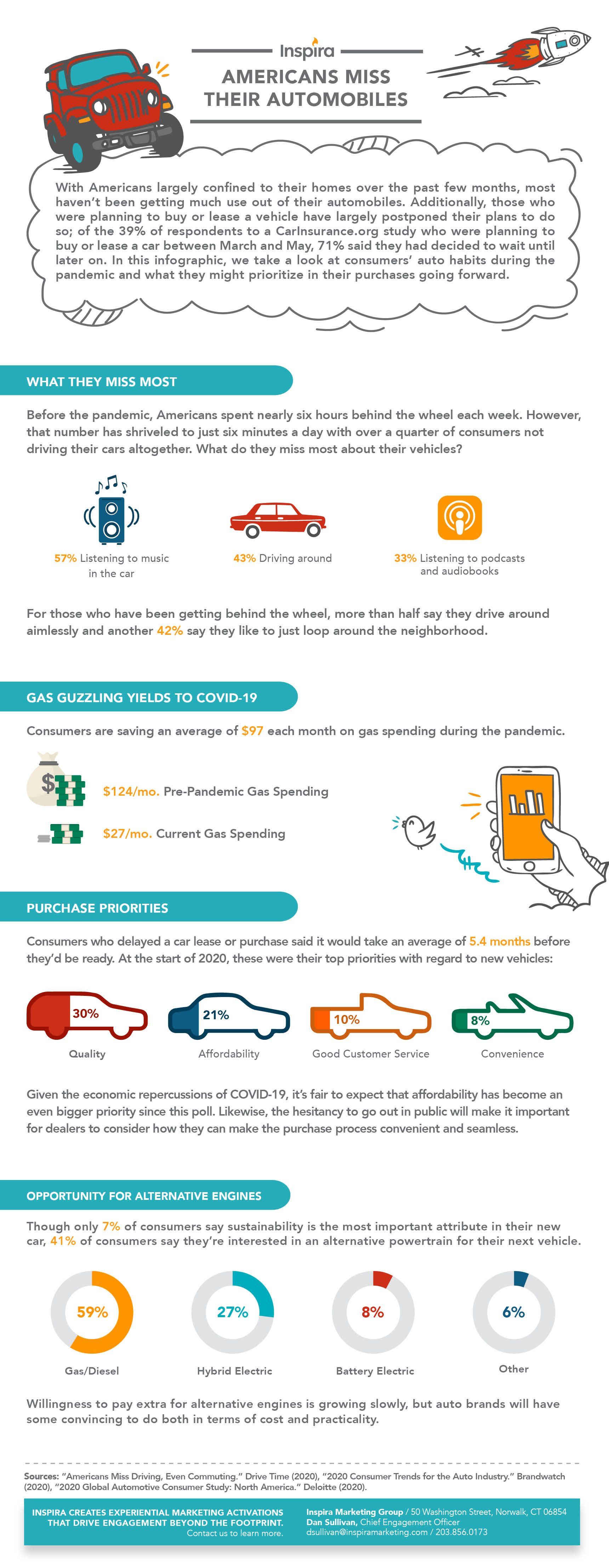Infographic: Americans Miss Their Automobiles
By Inspira Marketing
May 27, 2020
By Inspira Marketing
May 27, 2020
With Americans largely confined to their homes over the past few months, most haven’t been getting much use out of their automobiles. Additionally, those who were planning to buy or lease a vehicle have largely postponed their plans to do so; of the 39% of respondents to a CarInsurance.org study who were planning to buy or lease a car between March and May, 71% said they had decided to wait until later on. In this infographic, we take a look at consumers’ auto habits during the pandemic and what they might prioritize in their purchases going forward.

Here are four things you need to know about Americans and their automobiles:
What They Miss Most
Before the pandemic, Americans spent nearly six hours behind the wheel each week. However, that number has shriveled to just six minutes a day with over a quarter of consumers not driving their cars altogether. What do they miss most about their vehicles?
For those who have been getting behind the wheel, more than half say they drive around aimlessly and another 42% say they like to just loop around the neighborhood.
Gas Guzzling Yields to COVID-19
Overall, consumers are saving an average of $97 each month on gas spending during the pandemic.
Purchase Priorities
Consumers who delayed a car lease or purchase said it would take an average of 5.4 months before they’d be ready. At the beginning of 2020, these were their top priorities with regard to new vehicles.
Given the economic repercussions of COVID-19, it’s fair to expect that affordability has become an even bigger priority since this poll. Likewise, the hesitancy to go out in public will make it important for dealers to consider how they can make the purchase process as convenient and seamless as possible.
Opportunity for Alternative Engines
Though only 7% of consumers say sustainability is the most important attribute in their new car purchase, 41% of consumers say they’re interested in an alternative powertrain for their next vehicle.
Willingness to pay extra for alternative engines is growing slowly, but auto brands will have some convincing to do both in terms of cost and practicality.